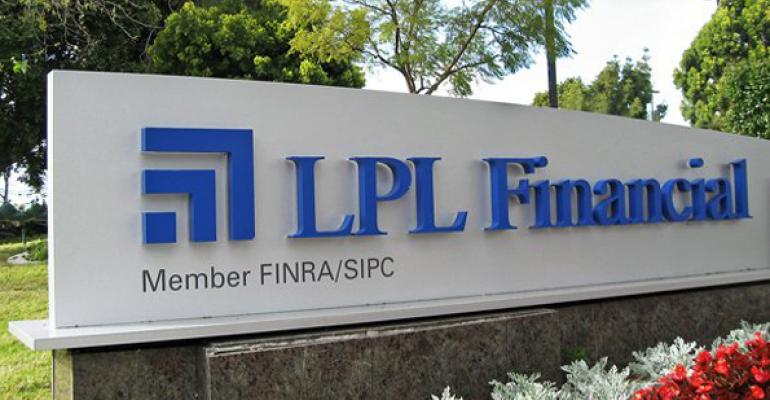LPL Financial is sweetening the recruitment deal for advisors who join from rival independent broker/dealers Cetera Financial, Securities America and Kestra Financial, offering advisors 50 basis points on assets if they join the firm’s corporate RIA and 40 basis points on assets to join hybrid offices of supervisory jurisdiction. The incentives are in the form of forgivable notes.
The enhanced recruitment package was announced about a week ago, according to sources familiar with the promotion.
Advisors from these firms who join LPL’s corporate RIA will also get a 93 percent payout for five years as a further enticement. The firm is not including proprietary assets as part of the calculation.
An LPL spokesperson did not return calls and emails seeking comment.
Paying basis points on assets is not a common structure for a recruiting package: firms typically pay a percentage on gross dealer concessions.
“In the broker/dealer channel, that’s a slippery slope because [LPL] could be paying sign-on money on assets that aren’t generating anything,” said Jonathan Henschen, president of the recruiting firm Henschen & Associates in Marine on St. Croix, Minn. “I find it strange that they’re doing it that way versus the traditional way of gross dealer concessions.”
It leads to a much higher dollar number than typical deals out there in the marketplace. An advisor with $100 million in assets and making $700,000 in production, for example, would get a $500,000 forgivable note. If that advisor were getting 40 percent of a gross dealer concession—a more typical transition deal—he would get half that.
The firm hand-selected some of its large OSJs to participate in the program; it was not open to all of them. But a source familiar with the deal said some OSJs were frustrated and confused because their deal was lower than what advisors get at the corporate RIA.
An executive at one of the firm’s large OSJs, who asked not to be named, understood LPL’s strategy.
“If you’re running a business, you want to drive business to the more profitable business model, so I think that’s the lens that they’re looking at that from,” the executive said. “I think the fact that they’re collaborating at all is positive. It shows some sense of partnership. But I think they need to be smart about their own profitability.”
Henschen said he understood why LPL would target Securities America, which recruited a lot of advisors in the wake of its acquisition of National Planning Holdings. But he would’ve also expected them to target such firms like Cambridge Investment Research and Woodbury Financial, which were next in line in terms of volume of reps recruited out of the NPH broker/dealers.
LPL Financial said on its fourth quarter conference call that, so far, $34 billion in assets and close to 1,000 advisors have transferred over from NPH.
After a first wave of transitions, 953 NPH advisors had joined LPL as of the end of 2017, out of a total of 3,200. LPL executives said during a quarterly earnings call in February that they expect to retain some 70 percent of the NPH advisors, or $70 to $75 billion of NPH’s $105 billion in reportable assets. Spokeswoman Rachel White said the firm had no further updates on those comments as of the end of February.
LPL agreed to pay an initial purchase price of $325 million for NPH, and a contingent payment ranging from zero to $123 million, based on the percentage of NPH production transferred.
Henschen said the firm has also set lofty recruiting goals for this year, putting Bill Morrissey, managing director and divisional president of business development, under pressure.
“Bill Morrissey is likely under the gun with his career on the line,” he said. “Desperate management takes drastic measures to hit their goals.”





